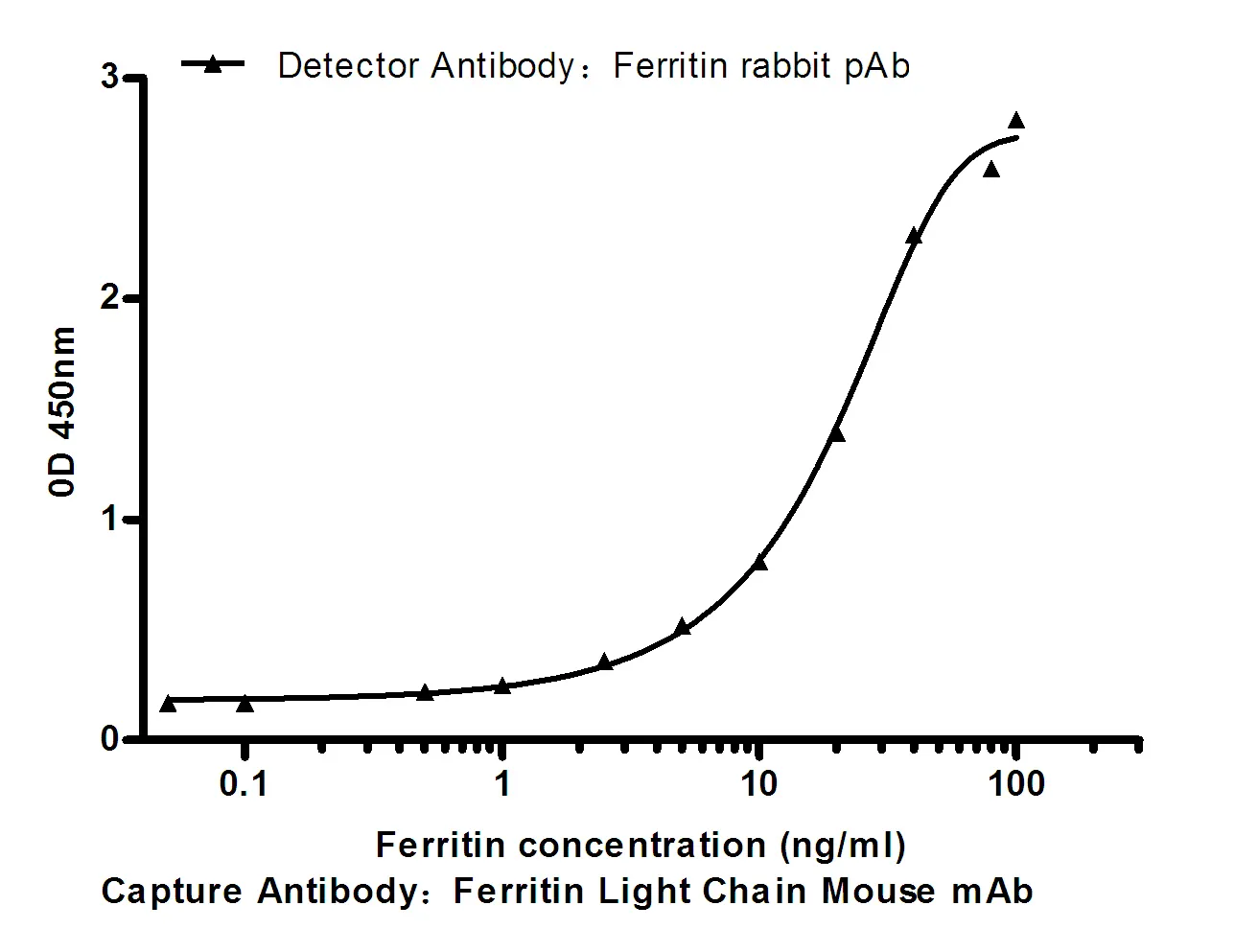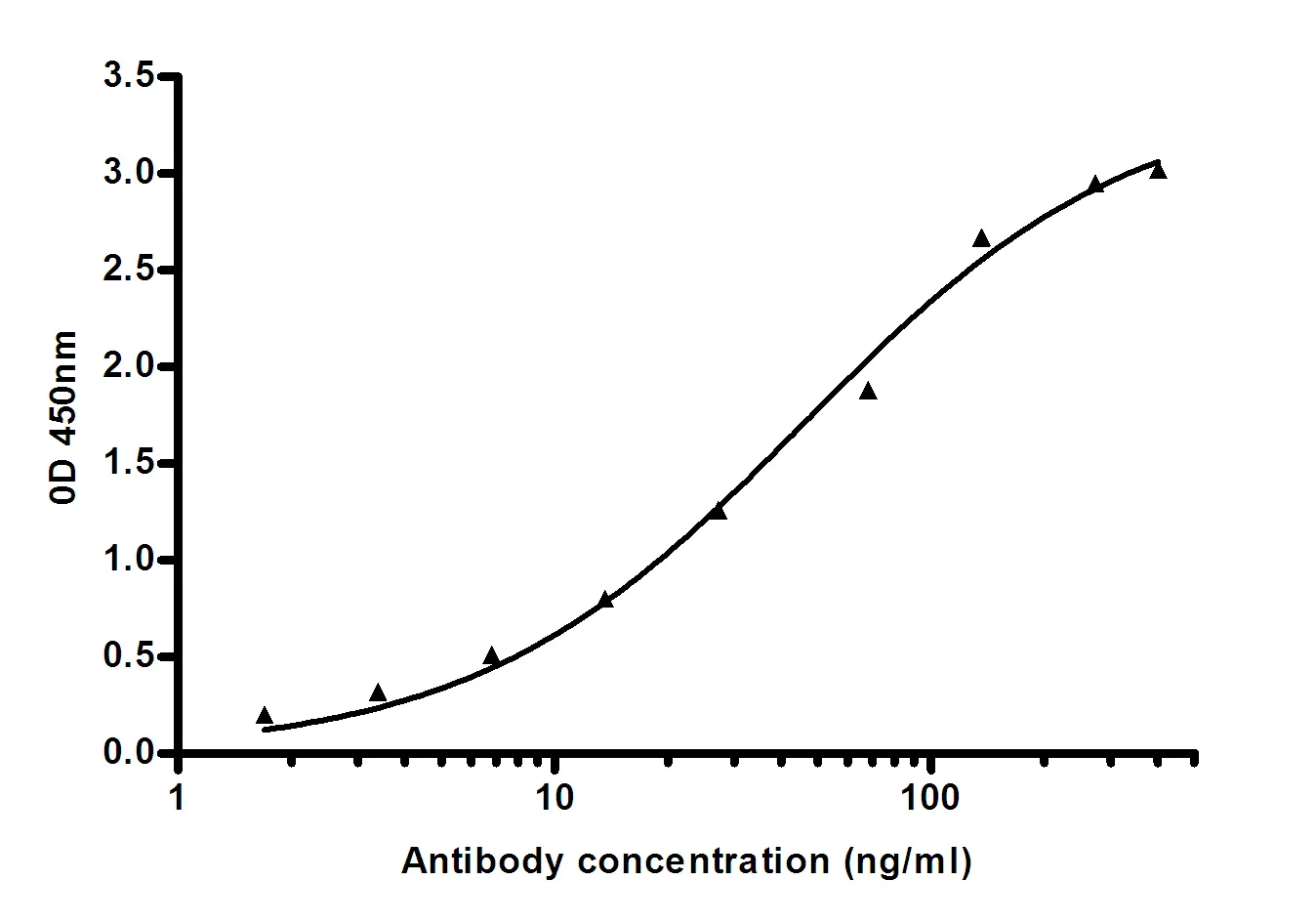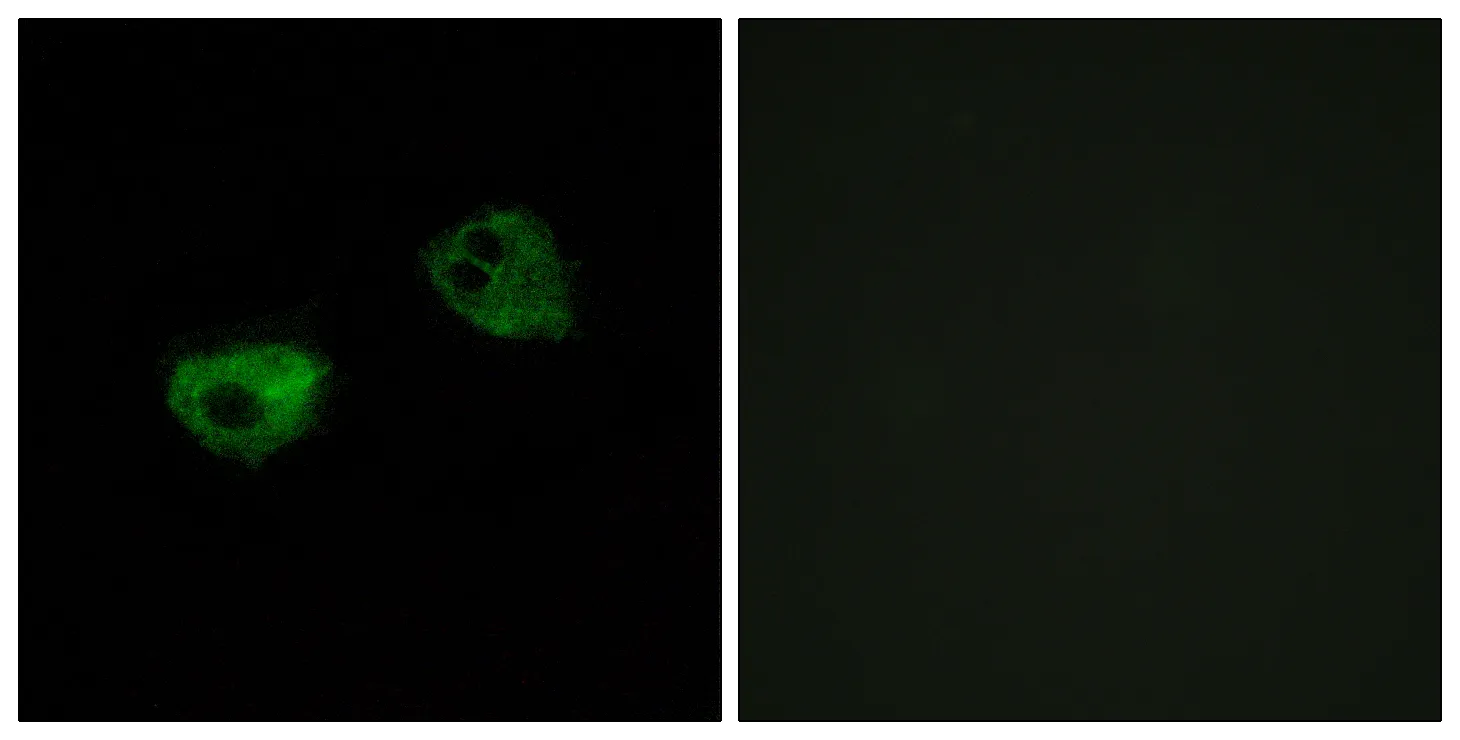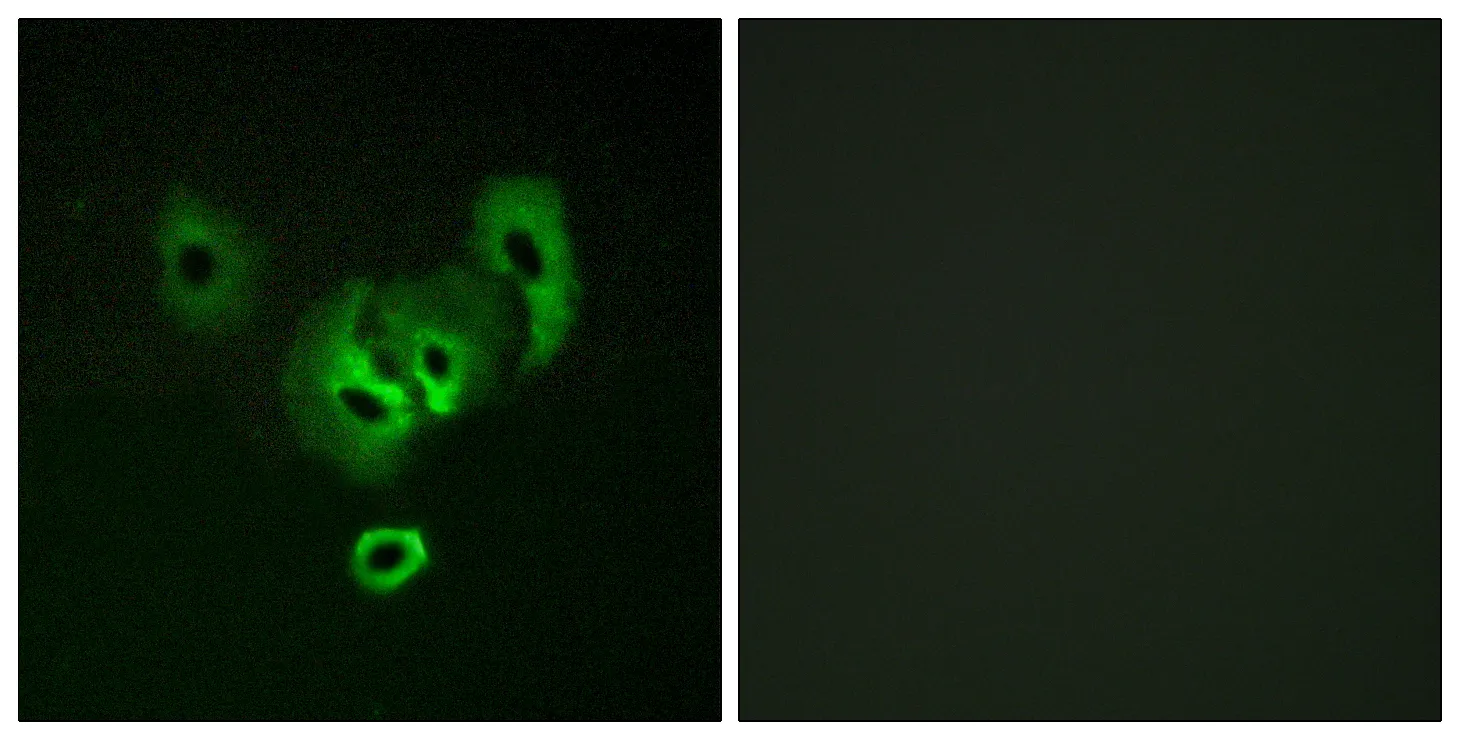Summary
Performance
Immunogen
Application
Background
This gene encodes a five transmembrane protein that functions as a major regulator of the innate immune response to viral and bacterial infections. The encoded protein is a pattern recognition receptor that detects cytosolic nucleic acids and transmits signals that activate type I interferon responses. The encoded protein has also been shown to play a role in apoptotic signaling by associating with type II major histocompatibility complex. Mutations in this gene are the cause of infantile-onset STING-associated vasculopathy. Alternate splicing results in multiple transcript variants. [provided by RefSeq, Sep 2014],function:Acts as a facilitator of innate immune signaling. Able to activate both NF-kappa-B and IRF3 transcription pathways to induce expression of type I interferon (IFN-alpha and IFN-beta) and exert a potent anti-viral state following expression. May be involved in translocon function, the translocon possibly being able to influence the induction of type I interferons. May be involved in transduction of apoptotic signals via its association with the major histocompatibility complex class II (MHC-II). Mediates death signaling via activation of the extracellular signal-regulated kinase (ERK) pathway.,PTM:Phosphorylated on tyrosine residues upon MHC-II aggregation.,subunit:Associates with the MHC-II complex (By similarity). Interacts with DDX58/RIG-I, MAVS/VISA and SSR2.,tissue specificity:Ubiquitously expressed.,
Research Area
RIG-I-like receptor;Cytosolic DNA-sensing pathway;




